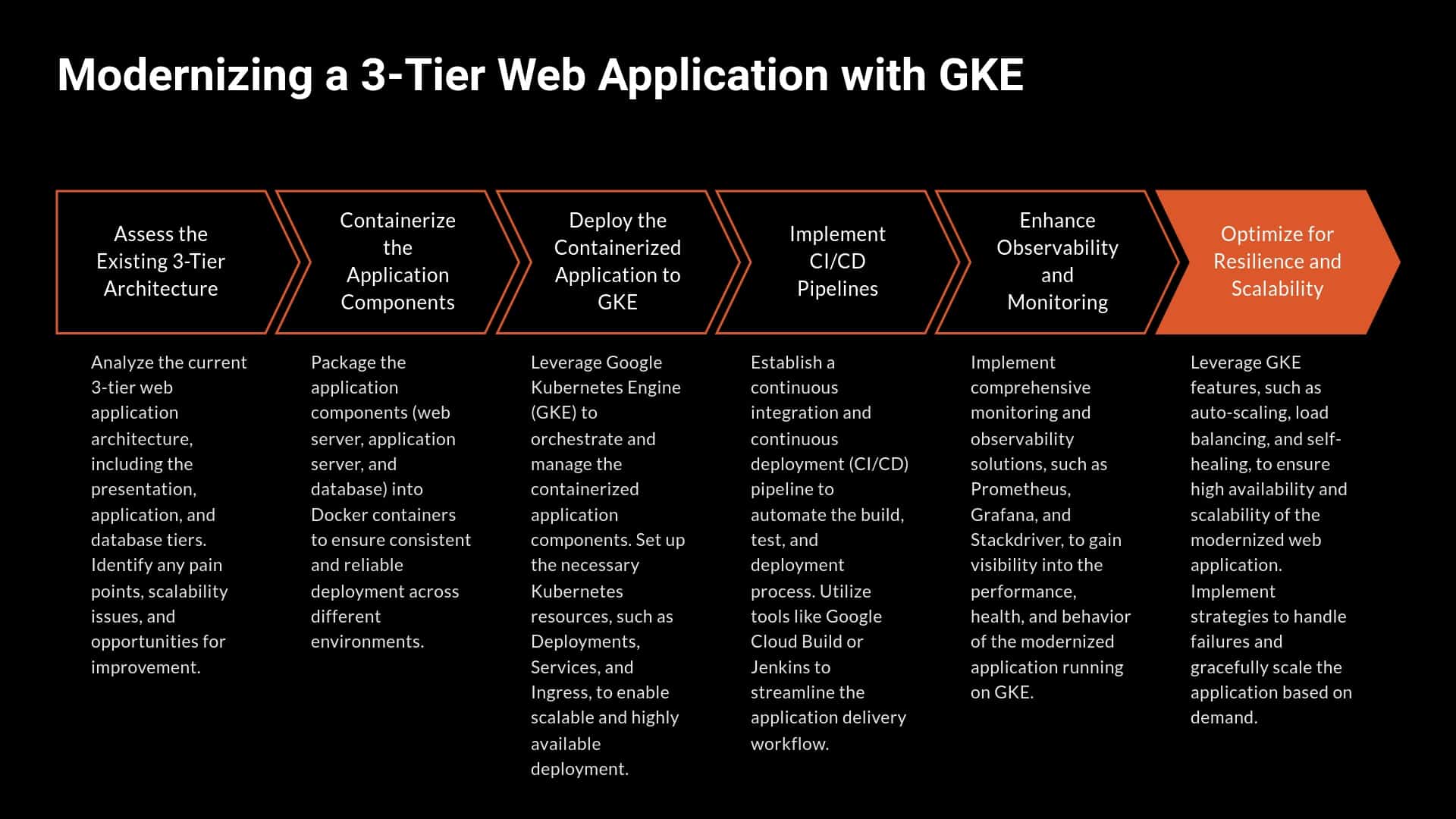However, seeking to capitalize on the immediacy and higher engagement rates of SMS marketing, they launched their first SMS blast campaign to promote their Black Friday deals. Unlike email campaigns where customers gradually check their inboxes throughout the day, SMS messages are typically read within minutes of receipt, creating an unprecedented surge in concurrent website visitors.
The marketing team had underestimated the dramatic difference in user behavior between email and SMS channels. When they sent out SMS notifications to their subscriber list of over 50,000 customers, they triggered a traffic surge that would reveal critical weaknesses in their infrastructure's ability to handle sudden, concentrated load spikes.
The Challenges
The client's initial SMS campaign created an immediate crisis. Within the first 3 minutes of sending the SMS blast, their website received over 15,000 concurrent visitors—nearly 10x their previous peak traffic. The infrastructure, designed for gradual traffic increases, couldn't cope with this sudden surge.
Critical System Failures
Two mission-critical components of their e-commerce platform failed under the load:
- Content Management System (CMS): The component responsible for serving product pages, images, and promotional content became completely overwhelmed. Response times spiked from an average of 200ms to over 30 seconds, and many requests timed out entirely, leaving customers staring at loading screens or error pages.
- Search Infrastructure: The product search functionality—a critical feature for e-commerce sites—crashed entirely within the first 5 minutes of the traffic surge. Customers trying to find specific products or browse categories were met with database timeout errors and 500-series server errors.
The Cost of Overprovisioning
As a temporary solution, the IT team made an emergency decision to scale their infrastructure vertically and horizontally. They immediately increased their server count from 3 to 30 servers—a 10x increase—to handle the Black Friday weekend traffic. While this prevented further crashes and saved their sales event, it created a new problem: massive infrastructure waste.
During the 72-hour Black Friday weekend period, the expanded infrastructure performed well. However, once the promotional period ended and traffic returned to normal levels, the client found themselves paying for 27 idle servers that sat mostly unused for the other 362 days of the year. At $200 per server per month, this represented $64,800 in annual waste—a cost that would severely impact their profitability.
The situation was unsustainable. The business wanted to continue leveraging high-engagement SMS marketing for future promotional events, but couldn't justify maintaining a permanently oversized infrastructure. They needed a solution that could dynamically adapt to their highly variable traffic patterns.
The Solution
Our team implemented a comprehensive cloud-native autoscaling solution that would allow the infrastructure to automatically adapt to traffic demands in real-time, eliminating both the risk of crashes during traffic spikes and the waste of idle resources during normal operations.
Remarkably, our team completed the entire migration and autoscaling implementation in just a matter of days, enabling the client to deploy the solution ahead of their next major promotional event with confidence.
Architecture Redesign
We redesigned the client's infrastructure using Google Cloud Platform's managed services, specifically targeting the two components that had failed during the initial SMS campaign:
- Content Management Layer: Migrated to a containerized architecture using Google Kubernetes Engine (GKE) with Horizontal Pod Autoscaling (HPA). The CMS containers now automatically scale from a minimum of 2 replicas during low traffic to a maximum of 30 replicas during peak demand, based on CPU utilization and request latency metrics.
- Search Infrastructure: Implemented Cloud Run for the search API, which automatically scales from 0 to hundreds of instances based on incoming requests. We also added a Cloud CDN layer in front of the search service to cache popular queries and reduce backend load by approximately 60%.
Autoscaling Configuration
We configured intelligent autoscaling policies based on multiple metrics:
- Target CPU Utilization: Set at 70% to ensure adequate headroom during scaling events
- Request Latency Threshold: Triggers scaling when average response time exceeds 500ms
- Request Rate: Monitors requests per second and scales proactively when traffic patterns indicate an imminent surge
- Custom Metrics: Integrated with their marketing platform to receive advance notice of scheduled SMS campaigns, enabling pre-scaling 5 minutes before message delivery
Load Testing and Validation
Before the next promotional event, we conducted extensive load testing to validate the autoscaling configuration:
- Simulated 20,000 concurrent users hitting the site simultaneously
- Verified that the infrastructure scaled from 3 to 25 servers within 2 minutes
- Confirmed that scale-down happened gradually over 15 minutes after traffic subsided to prevent premature resource reduction
- Tested database connection pooling to ensure the database tier could handle the increased connection load
The Results
The implementation delivered exceptional results across cost optimization, performance, and reliability metrics. The autoscaling solution transformed the client's infrastructure from a rigid, oversized deployment into a dynamic, cost-efficient system that perfectly matched their business needs.
Dramatic Cost Reduction
- Normal Operation Costs: Infrastructure now runs on just 2-3 servers during regular traffic periods, costing approximately $600/month in compute resources.
- Peak Event Costs: During high-traffic promotional events (Black Friday, Cyber Monday, flash sales), the system automatically scales to 20-30 servers. These peak periods typically last 48-72 hours and cost approximately $4,000 for the duration.
- Annual Cost Savings: Reduced infrastructure costs from $72,000/year (30 servers @ $200/month) to $11,000/year (baseline costs + 6 major promotional events), representing an 85% cost reduction while actually improving performance and reliability.
- ROI: The migration project paid for itself in just 2.5 months through infrastructure savings alone, not accounting for the additional revenue enabled by improved site reliability during peak sales periods.
Performance Improvements
- Zero Downtime: Since implementing autoscaling, the client has successfully handled 8 major promotional events with 100% uptime—a dramatic improvement from the crashes experienced during their first SMS campaign.
- Improved Response Times: Average page load times during peak traffic improved from 12 seconds (during the initial SMS campaign) to under 800ms, even with 10x more concurrent users than before.
- Search Performance: Search queries now return results in under 300ms even during peak load, compared to complete failures during the initial SMS campaign.
- Conversion Rate Impact: The reliability improvements during promotional events contributed to a 23% increase in conversion rates, as customers no longer abandoned carts due to slow loading times or errors.
Operational Benefits
- Reduced Manual Intervention: The infrastructure now handles traffic spikes automatically, eliminating the need for emergency manual scaling and reducing operational overhead by approximately 15 hours per month.
- Predictable Scaling: The marketing team can now confidently schedule SMS campaigns knowing the infrastructure will automatically adapt, enabling more aggressive growth marketing strategies.
- Future-Proof Architecture: The containerized, cloud-native architecture can now handle traffic surges of any foreseeable size, supporting the company's growth plans for the next 3-5 years without requiring major infrastructure changes.
- Enhanced Monitoring: Implemented comprehensive observability with Cloud Monitoring and Cloud Logging, providing real-time insights into system performance, costs, and scaling events.
Business Impact
The transformation enabled the client to fundamentally change their marketing strategy. They now run SMS campaigns 2-3 times per month instead of just during major holidays, generating an additional estimated $450,000 in annual revenue from promotional events that were previously too risky to attempt. The infrastructure costs for these additional campaigns are negligible due to autoscaling, while the revenue impact is substantial.
Perhaps most importantly, the client gained the confidence to scale their business without fear that their technology infrastructure would become a bottleneck. They've since expanded into new product categories and markets, knowing their platform can handle whatever growth comes their way.
Frequently Asked Questions
Find answers to common questions
To set up autoscaling for your eCommerce site, start by migrating to a cloud provider like Google Cloud Platform (GCP). Use services like Google Kubernetes Engine (GKE) for your Content Management System (CMS) and Cloud Run for APIs. Implement Horizontal Pod Autoscaling (HPA) to automatically adjust the number of container replicas based on CPU usage and request latency. Configure scaling policies to trigger when traffic increases, such as setting a target CPU utilization at 70% and establishing request latency thresholds. Test your setup with simulated traffic to ensure it can handle peak loads. Finally, monitor your system with tools like Cloud Monitoring to track performance and make adjustments as needed.
See What We Can Do for You
Ready to transform your security posture? Let's discuss how we can help your business.



